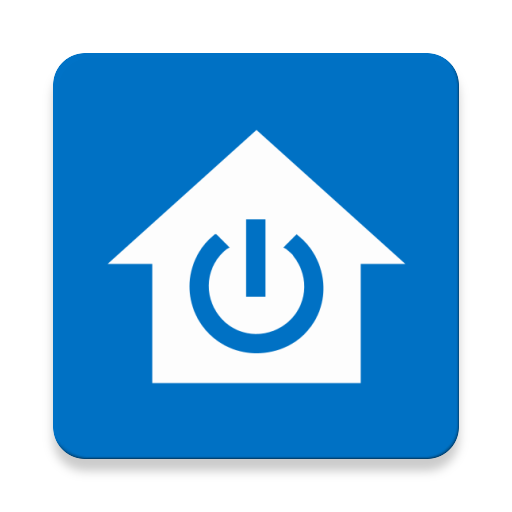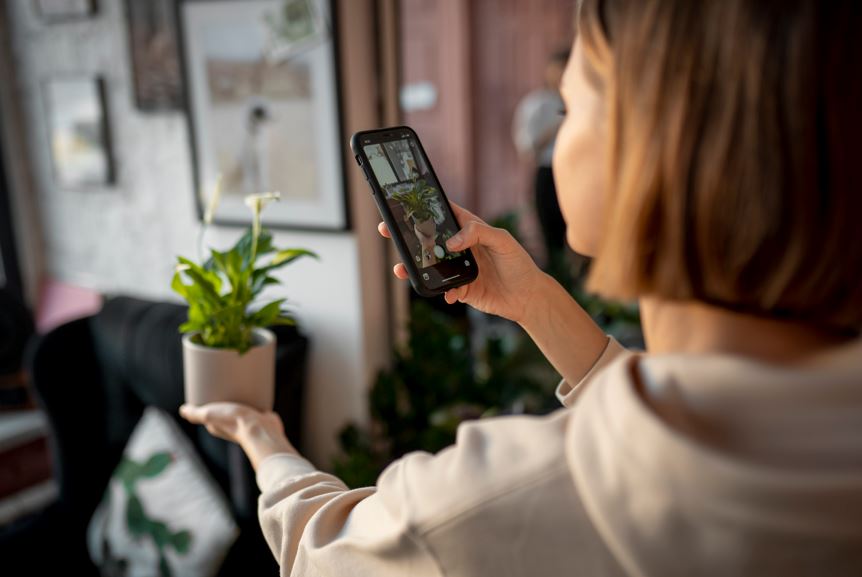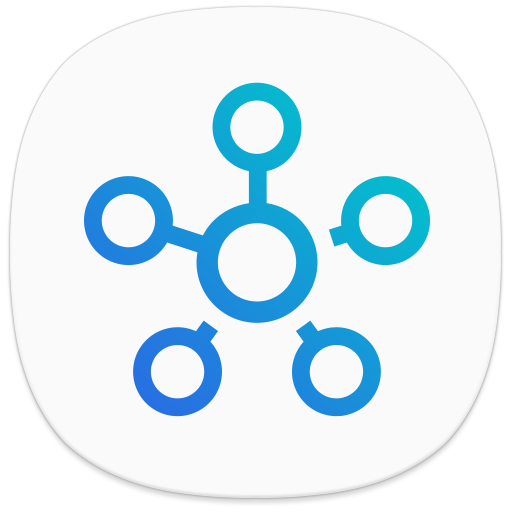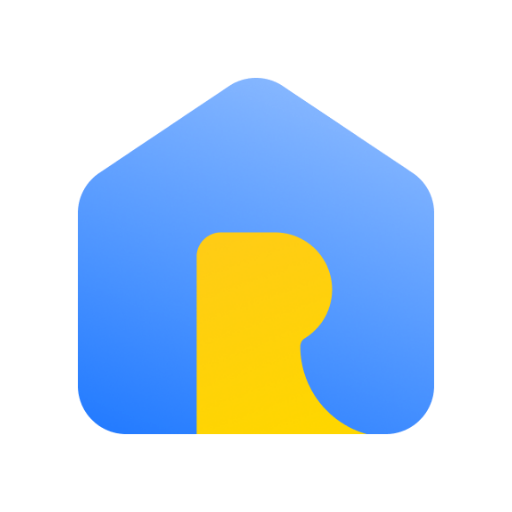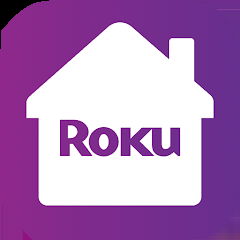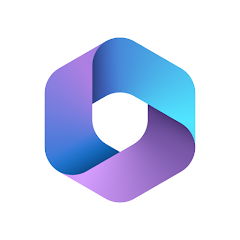Home Remote
About this app
In the current fast-paced world, technology has facilitated the remote control and management of homes. Home remote apps provide a convenient means to engage with smart home devices, connect with voice assistants, and personalize the home automation experience.
Given the multitude of options, selecting the most suitable one can be challenging. This exploration will delve into the features, advantages, categories, and leading home remote apps in the market to assist in making an informed choice.
What Are the Features of a Home Remote App?
A Home Remote App is a mobile application that enables users to control various smart devices within their connected home. It offers a variety of features and functionalities that improve the automation and convenience of managing smart home systems through a user-friendly interface.
The user interface of the Home Remote App allows users to easily navigate between different rooms and devices, offering quick access to controls and settings. The app is compatible with a wide range of smart devices, including lights, thermostats, cameras, and more, facilitating the creation of a fully interconnected home environment.
Through its automation capabilities, users can schedule tasks, establish routines, and create custom scenes to meet their specific requirements. The app emphasizes security by providing encrypted connections and secure login features to safeguard user data and home networks.
The setup process is straightforward, and the app's performance and customization options enhance its efficiency, delivering a personalized smart home experience for users.
1. Control of Smart Home Devices
The Home Remote App provides users with the capability to access and control smart home devices remotely. This feature offers convenience and efficiency in managing the home ecosystem, regardless of the user's location.
Whether the user is at work, on vacation, or simply in another room, the app allows for easy adjustment of smart devices. Users can control functions such as turning off lights, adjusting the thermostat, or checking security cameras from their mobile device.
The app seamlessly integrates with a variety of smart devices, ensuring a user-friendly experience with straightforward setup and reliable performance. Its intuitive interface simplifies navigation through different devices and settings, enhancing the overall smart home experience.
2. Integration with Voice Assistants
A significant feature of a Home Remote App is its seamless incorporation of popular voice assistants, enabling users to operate their smart devices through voice commands for a hands-free interaction.
By utilizing voice assistants like Amazon's Alexa or Google Assistant, users can effectively oversee their smart home devices with straightforward voice instructions. This integration guarantees that the Home Remote App is adaptable with a broad array of smart devices, enabling users to conveniently regulate lights, thermostat settings, security cameras, and more. This level of device compatibility is crucial for a streamlined and effective smart home experience, where users can easily engage with various devices via a unified platform, enhancing the overall comfort and convenience of their living environment.
3. Customization and Personalization
The Home Remote App provides a wide range of customization and personalization options for users to adjust their smart home experience based on their preferences using intuitive app settings and customization features.
By incorporating user-centric design principles, the app allows individuals to establish a personalized environment within their homes. Users have the ability to modify various aspects of their smart home setup, such as adjusting lighting settings and setting preferred temperature levels, to suit their unique lifestyle.
With simple interactions on the app interface, users can easily integrate their preferred devices and gadgets, creating a cohesive and personalized smart home ecosystem. This focus on customization enhances user satisfaction and underscores the app's dedication to delivering a tailored experience to each user.
What Are the Benefits of Using a Home Remote App?
Utilizing a Home Remote App provides several advantages, such as increased efficiency, convenience, improved user experience, enhanced security measures, and the potential for cost savings when managing your smart home system.
Through a Home Remote App, users can easily manage various aspects of their smart home using their phone or tablet. This streamlined control enables adjustments to lighting, temperature, and security settings with minimal effort, saving time and simplifying tasks. The app's user-friendly interface ensures a straightforward experience, allowing all members of the household to operate it seamlessly. By remotely supervising and regulating home devices, security measures can be enhanced, and alerts can be received in case of any suspicious activity, offering peace of mind. Besides providing convenience, this app can result in notable cost savings by optimizing energy use and effectively managing resources.
1. Convenience and Efficiency
The main advantages of a Home Remote App are centered on the convenience and efficiency it provides in managing smart home devices. The app prioritizes user convenience and ease of use through features like remote functionality, seamless setup, and optimal performance.
Users can control their smart home devices from anywhere and at any time, streamlining daily tasks and improving overall efficiency. The setup process is simple, allowing users to get started quickly without technical obstacles, saving time and frustration. The app's consistent performance on a day-to-day basis ensures a reliable experience, reducing the chances of interruptions or errors. These user-centric features work together to create a smooth and intuitive user interaction, ultimately resulting in a more satisfying user experience.
2. Cost Savings
Utilizing a Home Remote App may lead to cost savings by improving the efficiency of managing smart devices. The app's smart features optimize energy usage and resource allocation, potentially resulting in savings over the long term.
The app's capacity to schedule and automate device usage according to user preferences and occupancy patterns enhances its cost-saving potential. Users can establish personalized energy-saving modes that modify device settings when inactive, aiding in reducing electricity costs. Additionally, real-time monitoring capabilities give the power to users to monitor energy consumption and make informed choices for optimizing resource usage, ultimately resulting in significant long-term financial advantages.
3. Increased Security
The use of a Home Remote App offers enhanced security as a key benefit. It incorporates advanced security measures to protect your smart home ecosystem and provide assurance regarding home security.
These integrated security features function seamlessly to monitor and manage access points, identify any unusual activity, and send immediate alerts to your smartphone in the event of security breaches. Through the app, you can remotely secure doors, activate or deactivate alarms, and monitor your property from any location worldwide. This degree of control and visibility not only boosts the security of your home but also provides the peace of mind that your smart home system is secure constantly.
What Are the Different Types of Home Remote Apps?
Home Remote Apps are available in different types, each tailored to different preferences and requirements in smart home management. These types consist of Single-Brand Apps, Universal Apps, and DIY Apps, offering distinct approaches to device management and automation within a smart home ecosystem.
Single-Brand Apps are specifically designed to function with products from a particular manufacturer, ensuring smooth integration and optimized performance for those devices.
On the other hand, Universal Apps are more adaptable, capable of managing a broad range of smart devices from various brands under a single platform, making them convenient for users with diverse smart home setups.
DIY Apps, as the name implies, give the power to users to customize and create their automation routines, offering a higher level of flexibility and control over their smart home devices.
1. Single-Brand Apps
Single-Brand Apps are designed to work exclusively with specific smart devices from a single manufacturer, ensuring seamless integration and compatibility for users who prefer a unified ecosystem of smart devices.
By focusing on a particular brand's product line, these apps offer a tailored experience that takes full advantage of the unique features and functionalities of the devices. This targeted approach allows for a deeper level of optimization and customization, enhancing user experience. Single-brand apps often provide more reliable performance and faster updates as they are specifically optimized for the manufacturer's devices. This centralized control also leads to greater security and privacy measures, ensuring a more secure environment for users' data and interactions within the ecosystem.
2. Universal Apps
Universal Apps are versatile solutions that cater to a wide range of smart home devices, offering extensive app connectivity and device compatibility. These apps provide users with the flexibility to control diverse smart devices from different manufacturers within a single interface.
This seamless integration allows users to manage their smart lights, thermostats, security cameras, and other IoT devices seamlessly through one centralized app. With universal apps, individuals can create customized routines and automation sequences that involve multiple devices, making their smart home experience more cohesive and convenient. The ease of setup and intuitive controls enhance the overall user experience, simplifying the complexity of managing various gadgets. The compatibility of these universal apps with popular smart home platforms ensures a broader ecosystem of connected devices can be easily managed and monitored.
3. DIY Apps
DIY Apps provide users with the ability to customize and configure their smart home automation systems to suit their preferences. These apps enable users to have precise control over device settings, automation routines, and efficient remote monitoring capabilities.
Users have the option to create personalized schedules for their devices, adjusting them based on their daily routines and needs. The apps typically have user-friendly interfaces that make setting up various automated actions easier. The capability to control devices remotely from any location offers users convenience and peace of mind, allowing them to monitor and manage their smart home seamlessly. With DIY Apps, users can personalize their home automation experience to align with their lifestyle and preferences, enhancing the efficiency and enjoyment of everyday tasks.
How to Choose the Right Home Remote App for You?
When selecting a Home Remote App, important factors to consider include compatibility with smart devices, user-friendly interface, additional features for enhancing smart home experience, customization of app settings, and integration with existing smart devices.
It is crucial to ensure that the chosen Home Remote App is compatible with a wide range of devices within the smart home ecosystem. This compatibility allows for seamless control of all devices from a centralized platform. A user-friendly interface is essential for easy navigation and accessibility, facilitating effortless management of the smart home.
Seek out apps that offer extra features such as voice control, scheduling capabilities, and energy-saving modes to enhance the smart home experience. Customizable app settings enable users to tailor the app to their preferences and routines, making smart home management more personalized and efficient.
1. Compatibility with Smart Home Devices
When selecting a Home Remote App, it is important to verify its compatibility with the smart devices in your ecosystem. The app should seamlessly connect with a variety of smart devices to ensure comprehensive control and management within your smart home setup.
This compatibility with various smart devices is essential for a smooth and efficient smart home experience. A Home Remote App that can effectively work with different devices such as smart lights, thermostats, security cameras, and more allows for centralized control and automation. With one app that can communicate with all these devices, users can easily create customized routines, monitor their home remotely, and optimize energy usage. The integration capabilities of the app are key in simplifying the management of a smart home ecosystem.
2. User-Friendly Interface
Choose a Home Remote App that provides a user-friendly interface, ensuring easy navigation within the app, simplicity in setup and day-to-day use, and optimal performance for a smooth smart home management experience.
A user-friendly interface is important because it allows users to effectively manage various aspects of their smart home without facing unnecessary complications. Intuitive app navigation helps users to quickly access different functions without becoming lost in a multitude of options. The ease of setup ensures that users can easily connect their devices and establish automation routines without requiring advanced technical expertise. Smooth performance is crucial for a responsive and dependable smart home system that operates seamlessly, offering convenience and peace of mind to the users.
3. Additional Features
The additional features provided by a Home Remote App should be considered, including advanced app functionality, integration with other smart devices and services, and customization options tailored to specific smart home needs.
These extra features are essential for improving the overall smart home management experience. Advanced app functionality enables more intricate automation tasks, simplifying remote control of various home aspects. Ensuring seamless integration with other smart devices and services helps streamline daily routines and enhances the user experience. Customization options personalize the app to align with unique preferences and requirements, optimizing smart home operations as desired.
What Are the Top Home Remote Apps in the Market?
The market offers a variety of top Home Remote Apps known for their advanced features and seamless user experience. Some of the leading apps include Apple HomeKit, Google Home, Amazon Alexa, Samsung SmartThings, and Hubitat Elevation, each with unique advantages in smart home management.
Apple HomeKit is recognized for its compatibility with a wide range of smart devices, serving as a centralized platform for controlling lights, thermostats, and security systems effortlessly. Google Home, on the other hand, excels in voice control features, enabling users to manage their smart home using simple voice commands. Amazon Alexa features a vast library of skills and integrations, allowing users to personalize their smart home experience to their preferences. Samsung SmartThings offers strong automation capabilities, while Hubitat Elevation prioritizes local processing for enhanced security and reliability.
Each app caters to different user preferences and priorities in smart home management.
1. Apple HomeKit
Apple HomeKit is a well-known Home Remote App recognized for its sleek app design, intuitive navigation features, and exceptional performance in managing Apple-compatible smart devices within a seamless smart home ecosystem.
One of the distinctive features of Apple HomeKit is its user-friendly interface, making it effortless for users to control various aspects of their smart home with just a few taps on their Apple devices. The app's design is not only visually appealing but also highly functional, allowing users to easily set up automation, create scenes, and monitor their connected devices from anywhere.
The app's performance stands out for its reliability and responsiveness, ensuring that commands are executed promptly, enhancing the overall smart home experience.
2. Google Home
Google Home is a versatile Home Remote App that offers a user-friendly interface, seamless connectivity with various smart home devices, and enhanced security features, making it an ideal choice for users seeking comprehensive smart home management capabilities.
With Google Home, users can easily control their smart home ecosystem with just a few simple voice commands or taps on their mobile devices. The intuitive design of the app allows users to navigate through different settings effortlessly, adjusting lighting, temperature, entertainment systems, and more with ease. Its seamless integration with a wide range of smart devices, from lights to thermostats to security cameras, ensures that users can manage all aspects of their home from one centralized platform. Google Home's robust security protocols provide users with peace of mind, keeping their data and connected devices secure from potential threats.
3. Amazon Alexa
Amazon Alexa is recognized for being a leading Home Remote App, providing extensive app settings customization, user-friendly controls, and seamless app management for controlling smart devices through voice commands and intuitive app interfaces.
Users have the flexibility to personalize their experience by adjusting settings for brightness, volume, alarms, and more, allowing Alexa to be highly adaptable to individual preferences.
With its intuitive interface, users can easily navigate through various rooms and devices with just a few voice commands.
The app's management capabilities include creating routines, scheduling tasks, and integrating third-party apps for additional functionality.
This not only simplifies smart device control but also enhances the overall user experience by streamlining the interaction process.
4. Samsung SmartThings
Samsung SmartThings provides a comprehensive Home Remote App solution for home automation systems, with a focus on efficiency in managing smart devices and streamlined app management for a seamless smart home experience.
Users can easily control and monitor a wide range of smart devices such as lights, thermostats, security cameras, and more from a single interface with Samsung SmartThings. The app's integration with various home automation systems enables seamless connectivity and automation, enhancing convenience and comfort in daily living. Its intuitive app management features allow users to create customized routines, schedules, and alerts, personalizing their smart home experience to suit individual preferences. Samsung SmartThings aims to give the power to users to transform their living spaces into intelligent, responsive environments.
5. Hubitat Elevation
Hubitat Elevation is a versatile Home Remote App that functions as a smart hub for connecting various smart devices. It offers seamless control through mobile devices and utilizes smart technology to establish a cohesive smart home ecosystem. This powerful app is known for its capability to work together with a wide range of smart devices, including lights, thermostats, cameras, and more. Users can control all aspects of their smart home from a single platform.
One of its prominent features is the rule engine, which allows users to create complex automation routines based on triggers and conditions. Hubitat Elevation places a strong emphasis on privacy and data security, ensuring that user information remains protected in an era of increasing interconnectedness.
